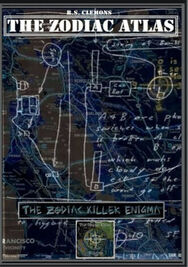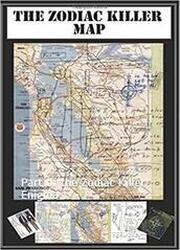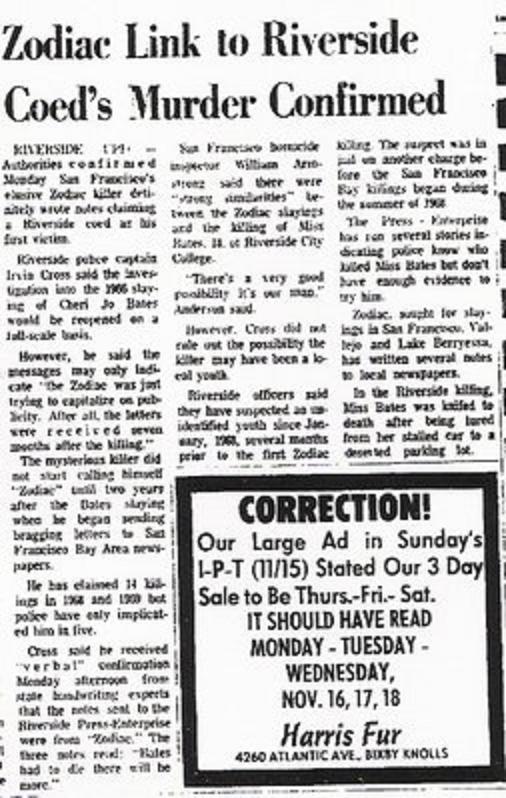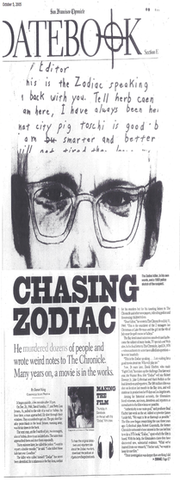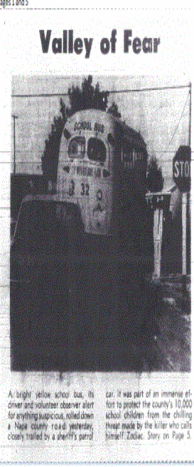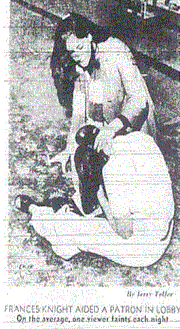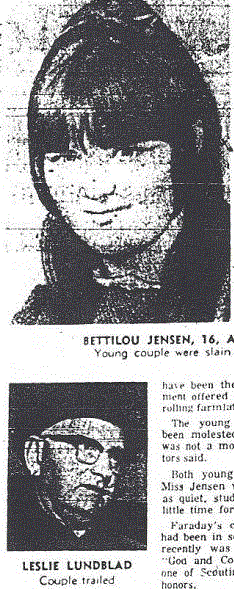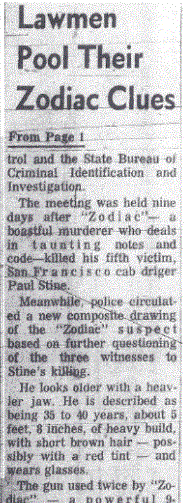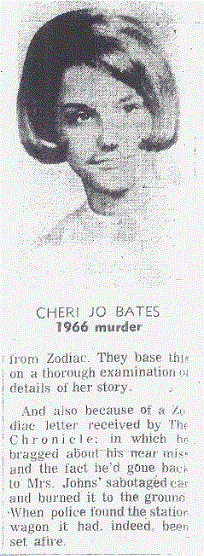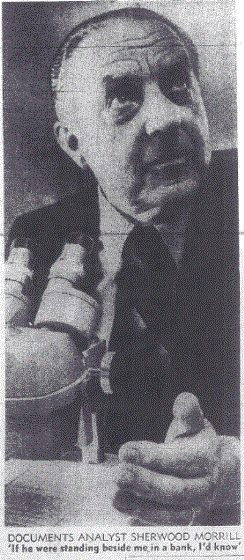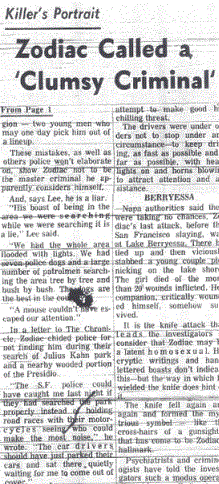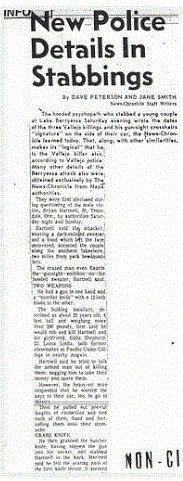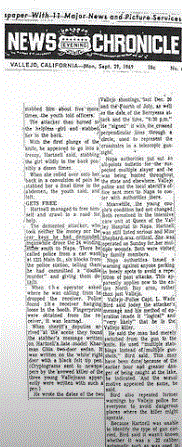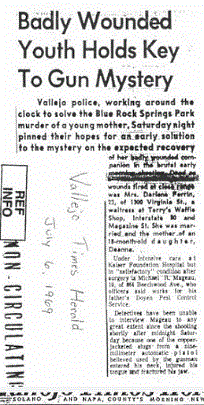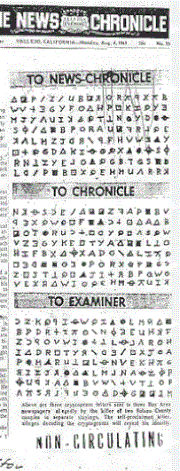On October 18th 1969 he ran a piece in the San Francisco Chronicle describing the Zodiac Killer as a 'latent homosexual'. Under the banner Zodiac-Portrait of the Killer he stated "The killer of five who calls himself 'Zodiac' is a clumsy criminal, a liar and possibly a latent homosexual". How close this description is to reality is open to question, but it has some legs and is worth investigating. The Zodiac Killer addressed Paul Avery personally when he sent the Halloween Card on October 27th 1970 approximately one year after this article was written - and bearing in mind the killer's ability to reduce everything to base level and the aforementioned characteristics he displayed in his missives, this is how we shall approach this card.

Some Zodiac researchers have explored the possibility the Zodiac was of English origin, on account of his word usage, such as 'shall', infrequently used in American English, but by the same token a word frequently used by thespians. Peek-a-boo
is known as Peep-bo in British culture and is the act of concealing ones face behind the hands or other object, before suddenly appearing back into view and uttering the words peek-a-boo or peep-bo. It can be seen in Wikipedia that many variations involve trees, similar to the depiction on the Halloween Card, where 'Hiding behind that tree' is added. See here. Whether or not it is a significant phrase by the Zodiac Killer is open to question, but Peep-Bo is a character that features during Act I of The Mikado.
The eyes peering from the tree, peek-a-boo and the hidden gender, may just have been the start of a form of 'toilet humor' backlash or closet acceptance that the Paul Avery reference to Zodiac possibly being a 'latent homosexual' had been officially noted. After all 'lav' is a colloquialism used in English speech for lavatory or 'water closet'. A 'closet homosexual' is used for people who have not disclosed their sexual orientation or gender identity, and ties in nicely with the English phrase 'skeleton in the closet', coined in the 19th century, a colloquial phrase and idiom used to describe an undisclosed fact about someone which, if revealed, would have a negative impact on perceptions of the person.
Falling back to the theatrical connection and The Mikado, 'Skeleton in the Closet' was a 1965 Japanese 'Pink Film', also called 'Secrets Behind the Wall'. A 'Pink Film' deals with Japanese theatrical films of nudity, almost exclusively shot on 35mm film - but in order to circumvent censorship restrictions, Japanese directors carefully positioned props over the actors private parts, although one doubts a pumpkin found its way on to set very often. Incidentally pumpkin seeds have long been used in parts of Asia for boosting sexual performance and prostate health.
 Castro Street in San Francisco
Castro Street in San Francisco San Francisco in the 1960s had overseen a marked change - the Castro District being one - having transformed from a working class area to a prominent symbol of the lesbian, gay, bisexual and transgender movements. After World War II many military personnel courted the area, unwilling to return to a life incompatible with homosexuality and other forms of behavior, and areas like the Tenderloin and Castro Street became the home to many gay bars and sex clubs. As early as 1963 Castro Street opened its first gay bar, the 'Missouri Mule'. One such person was gay activist and entertainer Jose Sarria, who himself had served in World War II, but continued to fight against police harassment against not only gay people, but gay establishments as a whole, having performed in the 'Black Cat Bar' at 710 Montgomery Street, a north-south thoroughfare.
The idea of a hidden body was extensively used in the Gothic novels of the Victorian period. Edgar Allen Poe was best known for his tales of mystery and the macabre, and one such example was this extract from 'The Black Cat' in 1845. "Gentlemen, I delight to have allayed your suspicions", and here, through the mere frenzy of bravado, I rapped heavily upon that very portion of the brick-work behind which stood the corpse of the wife of my bosom. The wall fell bodily. The corpse, already greatly decayed, stood erect before the eyes of the spectators". It has been suggested that the phrase 'skeleton in the closet' derives from the era of the notorious body snatchers, prior to 1832, when the UK's Anatomy Act allowed the more extensive use of corpses for medical research. The theory goes that, in a scenario similar to that of the concealment of Catholic priests in priest holes in domestic houses in Elizabethan England, doctors would conceal in cupboards the illegally held skeletons they used for teaching. Although there's no evidence at all to corroborate that theory. Concealed skeletons are occasionally found walled-up in houses, but they are usually those of unwanted infants. See here.
In the early years of San Francisco it was against the law for men to dress up in women's clothing, but an exception was made for one night only on Halloween, a pagan celebration that would become the adopted day for gay celebrations. Sarria encouraged patrons to be as open and honest as possible, exhorting the clientele, "There's nothing wrong with being gay–the crime is getting caught," and "United we stand, divided they catch us one by one." At closing time, he would lead patrons in singing "God Save Us Nelly Queens" to the tune of "God Save the Queen". Sometimes he would take the crowd outside to sing the final verse to the men across the street in jail, who had been arrested in raids earlier in the night. Raids on gay bars were routine, with everyone inside the raided bar taken into custody and charged with such crimes as being "inmates in a disorderly house". Although the charges were routinely dropped, the arrested patrons' names, addresses and workplaces were printed in the newspapers. When charges were not dropped, the arrested men usually quietly pleaded guilty. Sarria encouraged men to plead not guilty and demand a jury trial. Following Sarria's advice, more and more gay men began demanding jury trials, so many that court dockets were overloaded and judges began expecting that prosecutors have actual evidence against the accused before going to trial. One favored harassment technique, employed especially on Halloween after midnight, was to arrest drag queens under an old city ordinance that made it illegal for a man to dress in women's clothing with an "intent to deceive". In consultation with attorney Melvin Belli, Sarria countered this tactic by distributing labels to his fellow drag queens (hand-made, in the shape of a black cat's head) that read "I am a boy". If confronted, the queen would simply display the tag to prove that there was no intent to deceive. Sarria's actions helped bring an end to Halloween police raids Excerpt from Wikipedia.
The Zodiac Killer certainly seemed to have many things in common with San Francisco. Is it possible he was a 'latent homosexual' as described by Paul Avery, who harbored a resentment against police and officialdom, strikingly evident in his correspondence to the San Francisco Chronicle, not to mention his linkage to Melvin Belli through the 'Call to Chat Show' spectacle and the Dragon Card mailed on April 28th 1970 calling for people to wear his nice Zodiac buttons - possibly on their lapels, similar to the hand-made labels of protest above. And finally the Melvin Belli Letter mailed on the anniversary of Lake Herman Road, just before Christmas.
 Melvin Mouron Belli photographed in 1967
Melvin Mouron Belli photographed in 1967 Melvin Belli was a flamboyant showman and prominent attorney summoned to appear on the Jim Dunbar Chat Show supposedly by the Zodiac Killer, along with Francis Lee Bailey, well known for his involvement in the Patty Hearst SLA trial - something again the Zodiac seemed at pains to point out. Melvin Belli was famous for his use of 'Elmer' the skeleton, which he often used in his medical malpractice suits. After winning a court case, Belli would raise a Jolly Roger flag over his Montgomery Street office building in the Barbary Coast district of San Francisco (which Belli claimed had been a Gold Rush-era brothel) and fire a cannon, mounted on his office roof, to announce the victory and the impending party. See Wikipedia
The Dragon Card mentioned above contained these lines "If you dont want me to have this blast you must do two things. Tell everyone about the bus bomb with all the details. I would like to see some nice Zodiac buttons wandering about town. Everyone else has these buttons like, black power, melvin eats bluber, etc. Well it would cheer me up considerably if I saw a lot of people wearing my buton. Please no nasty ones like melvin's. Thank you". The card used was a Jolly Roger greetings card.- and we know that a Jolly Roger is a traditional English name used to refer to the flag depicting part of a skeleton and displayed on pirate ships. The links are there, but are they interconnected? Was the Halloween Card a form of base subtle humor, along with the Dragon Card that implied the Zodiac Killer did indeed harbor a deep felt resentment, against not only Paul Avery and the San Francisco Chronicle, but also the police in general - not only for the reasons we have become accustomed to, but for reasons far more personal to our killer, leaving us to wonder if the 'skeletons in the closet' may have been rattled loose just slightly and the 'mask' of the Zodiac Killer may one day fall to reveal his true identity.




 RSS Feed
RSS Feed



